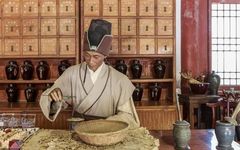To prevent not finding it next time!
According to the “Treatise on Damp Diseases in Traditional Chinese Medicine”, “dampness” can induce over 140 diseases, so when the body’s “dampness” is strong, it is essential to pay attention!
As summer heat and the plum rain season arrive, especially after the Grain in Ear (Mangzhong) solar term, the weather becomes even more oppressive. In the southern regions, one can feel a heavy dampness in the air, making the body often sticky and uncomfortable. Some friends describe the air as if it could be squeezed out as water.
Because of the “external environment’s damp heat, combined with internal damp heat”, the body’s damp heat can double, especially for those with existing conditions such as “acne, eczema, hand sweat blisters, scrotal itching, vaginitis, fatigue, yellow and sticky stools”. Various symptoms may frequently occur or worsen, causing great distress.
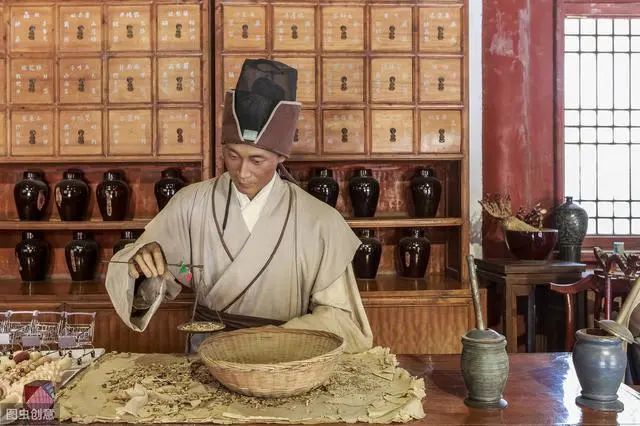
As the saying goes in TCM: “A thousand cold conditions are easy to remove, but dampness is hard to eliminate; dampness is sticky and turbid, like oil in flour.” “Dampness” is the source of myriad diseases and can be considered one of the greatest health hazards for modern people.
Because “dampness” gets along particularly well with the other six evils, it can be said to be a friendly companion to all, for example:
When “dampness” and “cold” come together, it becomes Han Shi (Cold Damp),
When “dampness” and “heat” come together, it becomes Shi Re (Damp-Heat),
When “dampness” and “wind” come together, it becomes Feng Shi (Wind-Damp),
When “dampness” and “summer heat” come together, it becomes Shu Shi (Summer Damp).
This tendency of “dampness” to make friends everywhere is not a good phenomenon for us, as they are not healthy allies but rather corrupt elements that harm the body’s health.
How can one distinguish whether they have a “Phlegm-Damp”, “Damp-Heat”, or “Cold-Damp” constitution?
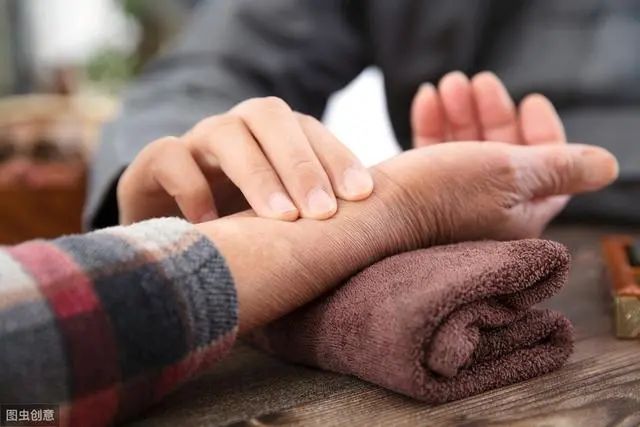
1. Phlegm-Damp
Individuals with a Phlegm-Damp constitution typically exhibit symptoms such as obesity, swollen limbs, oily skin, dull complexion, slippery tongue coating, cold hands and feet, excessive sleepiness, frequent bowel movements, chest tightness, easy sweating, joint pain, and excessive phlegm.
2. Damp-Heat
Those with a Damp-Heat constitution often experience loose stools, diarrhea, or constipation, thick and greasy tongue coating, serrated edges on the tongue body; fatigue, drowsiness; sensitivity to both cold and heat; dry mouth, bitter taste, bad breath; excessive phlegm, cough; oily hair, hair loss; swelling, drooping eye bags; lower back and joint pain; chest tightness; dark circles; dizziness and lack of energy; dampness in the genital area; scrotal dampness; facial blemishes, acne, and oily skin; abnormal vaginal discharge with odor and itching; oily skin, and eczema.
3. Cold-Damp
Individuals with a Cold-Damp constitution often have pale, bluish, dark, or black complexions; recurrent oral ulcers, cough with thin white phlegm; runny nose, cold sweat, frequent sneezing (especially in the morning or when exposed to wind); prone to abdominal pain and diarrhea; facial acne and blemishes; skin prone to eczema, psoriasis, and vitiligo; cold hands and feet, swollen ankles; joint pain in limbs, neck and shoulder pain, shoulder periarthritis, and lower back pain.
If you have 2-4 of the above symptoms, it indicates that your body has dampness; the more symptoms you have, the more severe the dampness in your body.
Many TCM health enthusiasts often choose to soak their feet in Wen Dan Tang (Warm Gallbladder Decoction) during summer to improve health issues caused by “Phlegm-Damp” and “Damp-Heat”;
Although soaking feet in Wen Dan Tang is becoming more familiar and widely used, many people still have various questions, such as how to use it more effectively? What precautions should be taken? Can everyone use it?
Answers to the most frequently asked questions
1. How to prepare and use Wen Dan Tang?
Just like preparing Chinese herbal medicine, many friends still find it difficult to prepare the medicine themselves, mainly because it is somewhat troublesome, and the preparation requires attention to “method, technique, and order”, and of course, the “utensils” used for preparation are also important.
When preparing Chinese herbs, it is generally recommended to use a “sand pot or clay pot” for boiling the medicine. If you do not have a “sand pot or clay pot”, you can use a “stainless steel pot” for boiling; it is important to note that do not use “iron pots, copper pots, or aluminum pots” for boiling Chinese herbs!

My wife is a meticulous person; she rinses the herbs with clean water (this way, the resulting decoction is clean and free of floating debris), and then soaks them in clean water for 30 minutes;
The soaking is necessary because the herbs are dry, and if we boil them directly, their efficacy cannot be released immediately. Therefore, we need to soak the herbs for 30 minutes to allow them to absorb water and become moist;
Then, bring the decoction to a boil over high heat, then reduce to low heat and simmer for 30 minutes, which effectively releases the medicinal properties of the herbs; strain the decoction for later use.
2. How long should one soak their feet in Wen Dan Tang, and when is the best time to soak?
If possible, it is best to soak your feet once in the morning and once in the evening, dividing the prepared decoction into two portions, adding appropriate warm water for foot soaking.
If time does not permit in the morning, you can choose to soak your feet in the evening, ideally around 9 PM; if you sleep early, you can adjust accordingly, avoiding the time after meals.
The water temperature should not be too hot, generally controlled between 38-42 degrees Celsius to avoid burns; the water level should ideally cover the tops of the feet. If the water temperature drops during soaking, you can add warm water as needed.
Soaking time: It is recommended to soak for about 20 minutes, allowing the body to sweat slightly, which is the best state for foot soaking.
3. How long is a typical cycle for soaking in Wen Dan Tang?
Generally, for those with dampness, whether it is “Phlegm-Damp, Damp-Heat, or Cold-Damp”, it is best to soak in Wen Dan Tang continuously for 8-10 days; if you feel that the dampness is severe, it is recommended to soak for about 2 weeks (approximately 14 days).
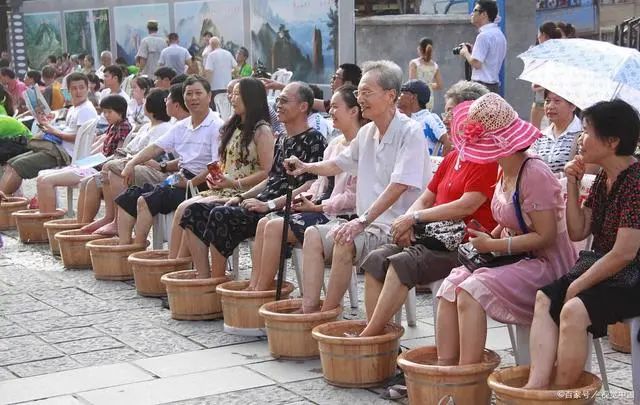
4. Can individuals with Cold-Damp also use Wen Dan Tang for foot soaking?
Individuals with a Cold-Damp constitution can also use it; for example, a white tongue body with a white greasy coating; a large tongue body with clear teeth marks, prone to diarrhea;
You can replace Zhu Ru (Bamboo Shavings) with Sheng Jiang (Fresh Ginger) or Gan Jiang (Dried Ginger) and boil them together; it can be said to be a decoction that eliminates three types of dampness, which most people with dampness can benefit from, which is also why I love this foot soaking formula.
5. Why do some Wen Dan Tang herbal ingredients differ?
With the passage of time, changes in lifestyle and dietary habits, environmental climate changes, and differences in constitution, TCM practitioners will make corresponding adjustments and modifications. For example, the formula I use consists of six herbs: Ban Xia (Pinellia), Zhi Shi (Immature Bitter Orange), Chen Pi (Dried Tangerine Peel), Zhu Ru (Bamboo Shavings), Zhi Gan Cao (Honey-Fried Licorice), and Fu Ling (Poria). Although the number of herbs is not many, the effect of “eliminating dampness” is still quite good.
6. Precautions
1) It is not advisable to soak feet within half an hour after meals to avoid blood flow throughout the body, causing digestive discomfort;
2) Pregnant women, women during menstruation, and those allergic to Chinese herbs should not use it.
Many people think that foot soaking is only for winter; why soak feet in the hot summer? Isn’t that just adding heat? This line of thought is mistaken.
Not to mention that foot soaking is not only suitable for winter and is not just a sign for the elderly; summer foot soaking is a simple and beneficial way to maintain health, which is increasingly being accepted and used by many.
Foot bath shops are everywhere in the city, and the variety of foot baths can be overwhelming for the public. Many girls even choose milk baths to nourish their skin. In fact, when the body’s internal condition is well-regulated, the skin naturally becomes hydrated and radiant.
TCM health preservation has been passed down for thousands of years, and the wisdom and efficacy of Chinese herbs are profound. For example, adding a specific herb during foot soaking can significantly change the effects.
Here are a few convenient examples
Ai Ye (Mugwort): Warms Yang and dispels cold;Jiang Pian (Ginger Slices): Dispels wind and cold, promotes blood circulation;Hua Jiao (Sichuan Pepper): Dispels wind and cold, unblocks meridians;Bai Cuo (White Vinegar): Relieves fatigue, kills bacteria, and eliminates athlete’s foot;Hong Hua (Safflower): Activates blood circulation, alleviates pain, and prevents frostbite;Gui Pi (Cinnamon): Warms and tonifies kidney Yang, reduces edema.“Foot soaking” is both safe and practical, and soaking before bed can also help with sleep. When used correctly, herbal foot soaking can sometimes be even more effective than taking decoctions.
For example, individuals with internal “dampness” may have poor spleen and stomach absorption; in this case, taking decoctions to eliminate dampness may not be as appropriate as using foot soaking. Foot soaking can absorb the medicinal properties through the meridians in the soles of the feet, and the effect is comparable to that of oral decoctions.
Additionally, “foot soaking” helps improve local blood circulation, dispel cold, and promote metabolism, ultimately achieving the goal of “health preservation, disease prevention, and treatment”—a true multi-benefit approach.
If you find this useful, 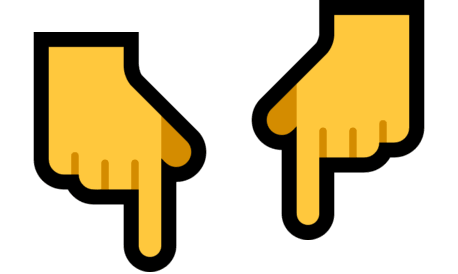 remember tofollow us!
remember tofollow us!
Editor shares good articles with friends
1. The most comprehensive! A list of 55 useful and inexpensive common medicines, a must-have for family first aid kits! Hurry and save it!
2. Medicines that hospitals do not want to prescribe and pharmacies do not want to sell, 12 types of “immediate effect” Chinese patent medicines, cheap and effective!
3. For those with nodules in the body, eating these 3 types of fruits regularly may help the nodules gradually dissipate.
4. What are the benefits of regularly drinking water infused with dried mulberries, and can it be consumed long-term?
Like is a form of encouragement Share to spread joy
After reading, please click“Looking”

